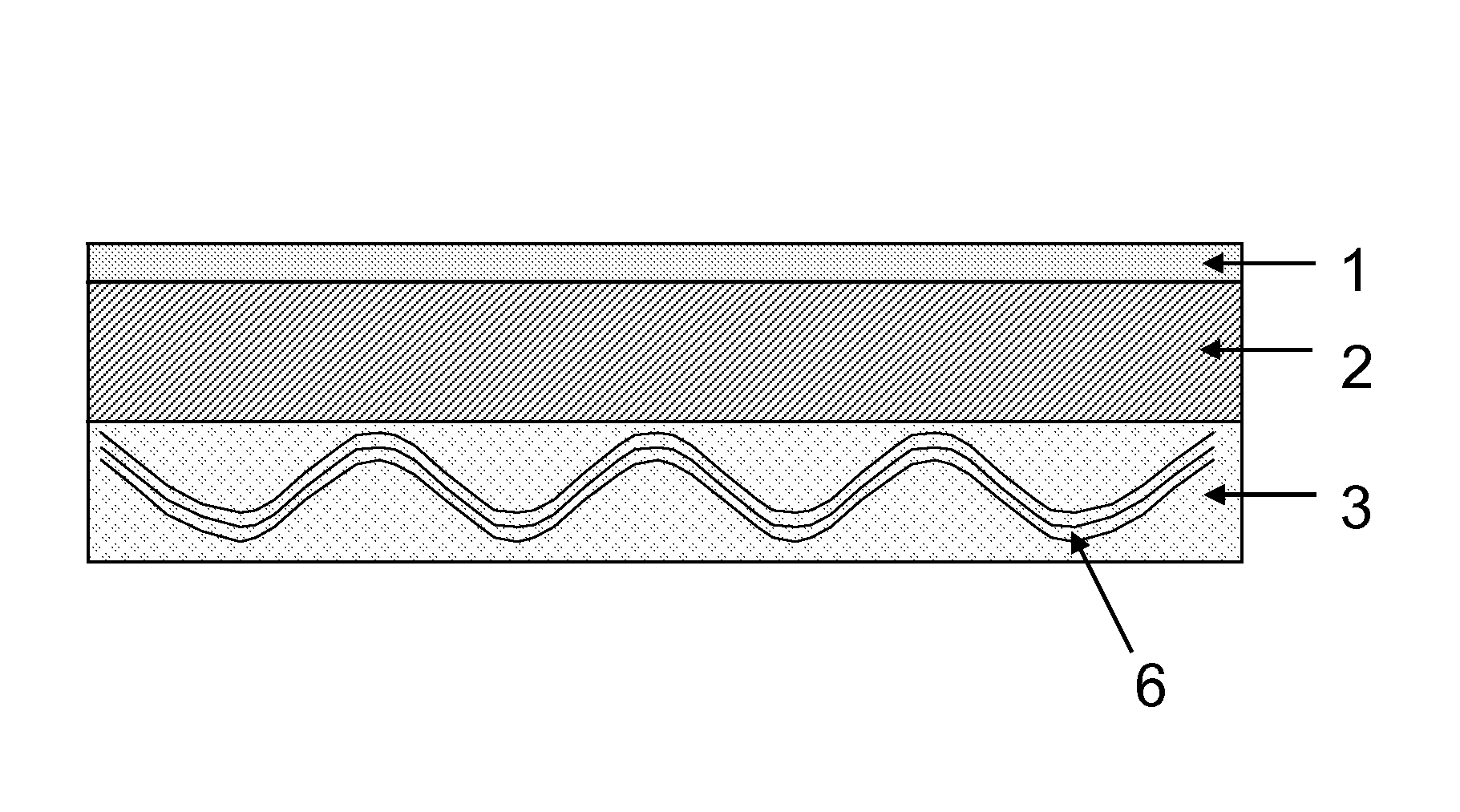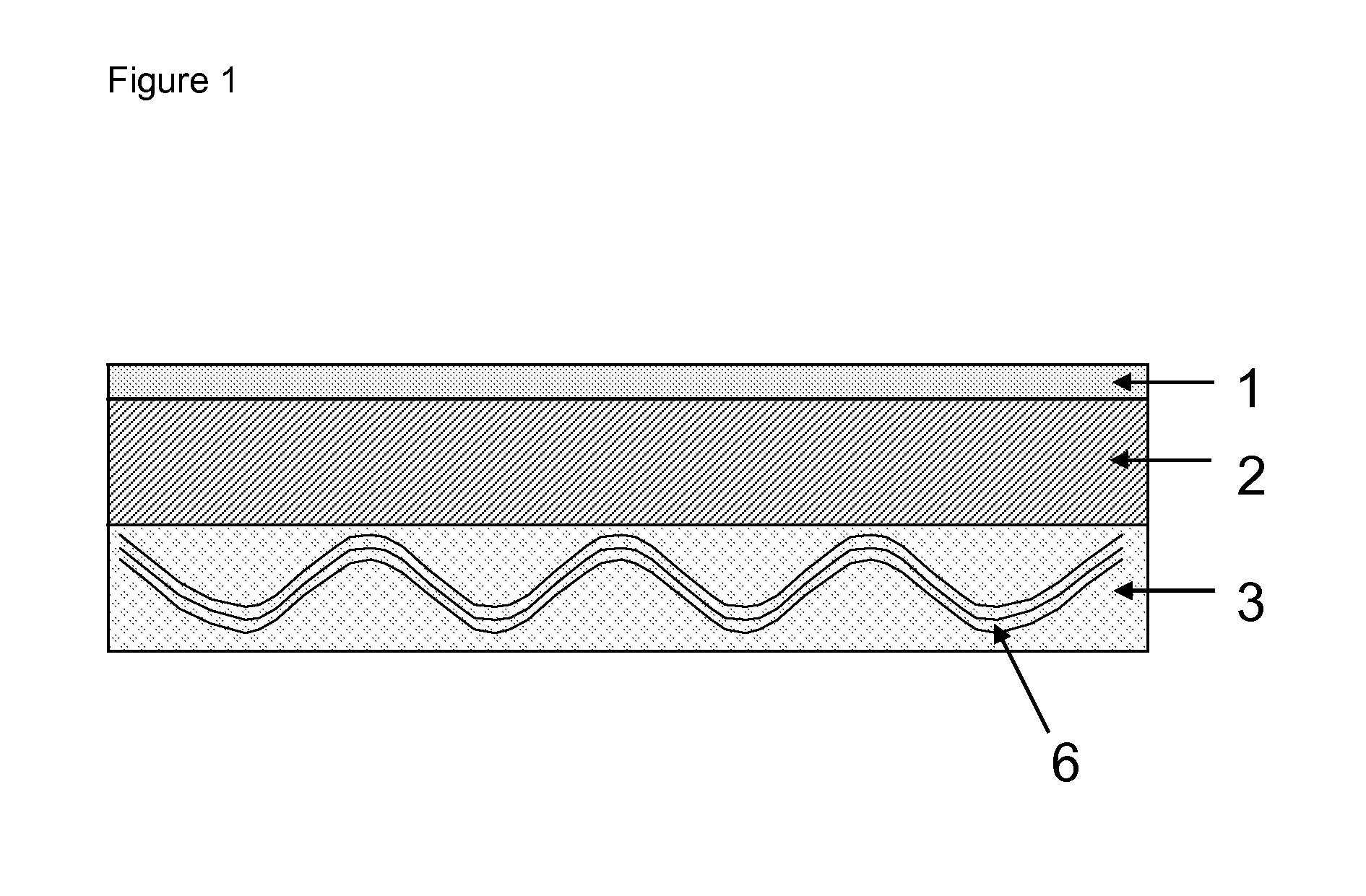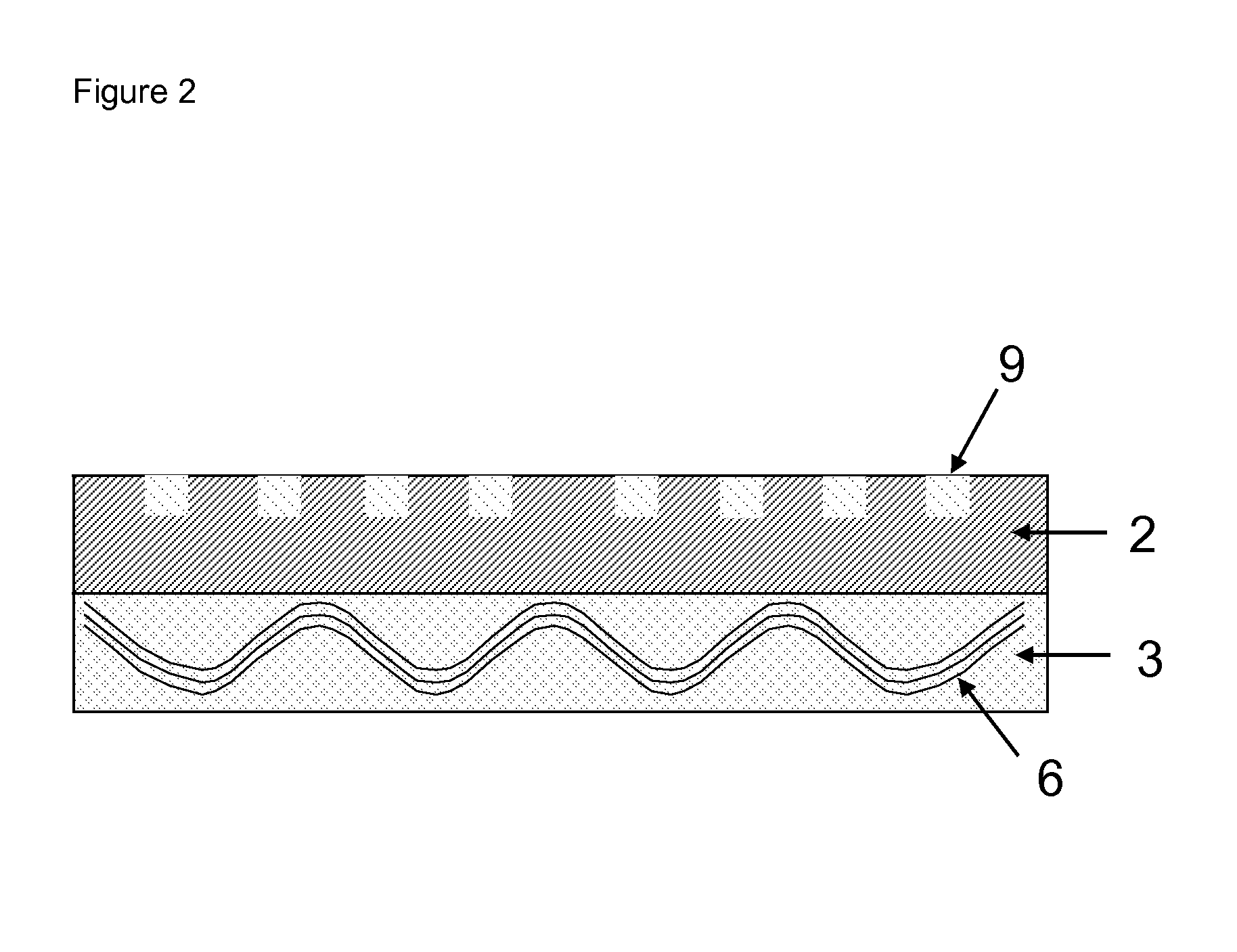Composite build-up material for embedding of circuitry
a technology of build-up material and circuitry, which is applied in the direction of dielectric characteristics, light absorption dielectrics, conductive pattern formation, etc., can solve the problems of high cte of rcf material, increase production time and therefore cost, and difficult to create, so as to reduce process steps, reduce voc content, and high dimensional stability
- Summary
- Abstract
- Description
- Claims
- Application Information
AI Technical Summary
Benefits of technology
Problems solved by technology
Method used
Image
Examples
example
[0141]Preparation of Resin Powders for Layers (2) and (3)
[0142]The resin components listed in Table 1 were weighed out in the quantities shown and thoroughly mixed together in a polyethylene bag.
TABLE 1components used for the preparation of theresin powders for resin layers (2) and (3).ComponentQuantity (g)Multifunctional solid epoxy resin480Bakelit PF 0790 K03180Submicron sized silica338Total:998
[0143]A dicyclopentadienyl-bridged multifunctional solid epoxy resin, Bakelit PF 0790 K03 which is a phenol-formaldehyde-based, phenolic resin (CAS-no. 9003-35-4), and a submicron sized silica filler with an average particle size of 0.3 microns and a spherical particle shape, are used as raw materials. The mixed components of the dielectric were then extruded on a 19 mm-bore, 5-zone, 24 l / d, twin screw extruder made by OMC, Italy and fitted with screws having the maximum number of mixing elements. The barrel temperature in the mixing zones was set to 100° C. and the rotation speed to 600 rp...
PUM
| Property | Measurement | Unit |
|---|---|---|
| thickness | aaaaa | aaaaa |
| thickness | aaaaa | aaaaa |
| temperatures | aaaaa | aaaaa |
Abstract
Description
Claims
Application Information
 Login to View More
Login to View More - R&D
- Intellectual Property
- Life Sciences
- Materials
- Tech Scout
- Unparalleled Data Quality
- Higher Quality Content
- 60% Fewer Hallucinations
Browse by: Latest US Patents, China's latest patents, Technical Efficacy Thesaurus, Application Domain, Technology Topic, Popular Technical Reports.
© 2025 PatSnap. All rights reserved.Legal|Privacy policy|Modern Slavery Act Transparency Statement|Sitemap|About US| Contact US: help@patsnap.com



